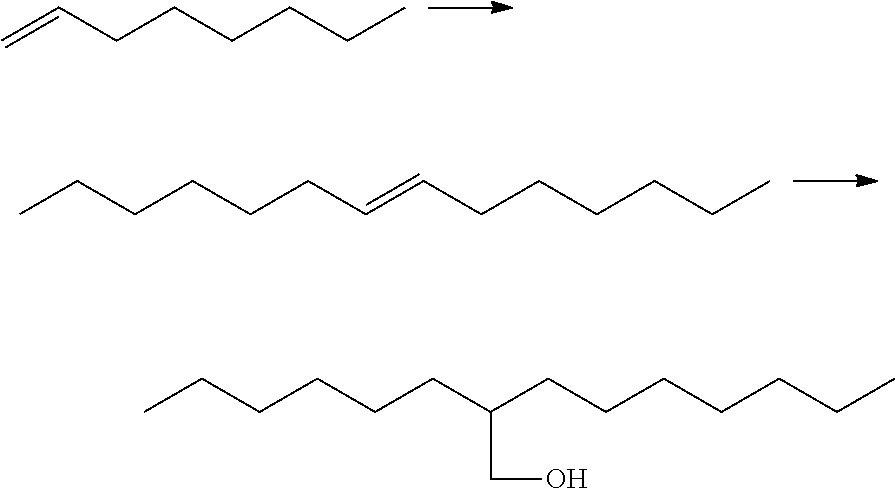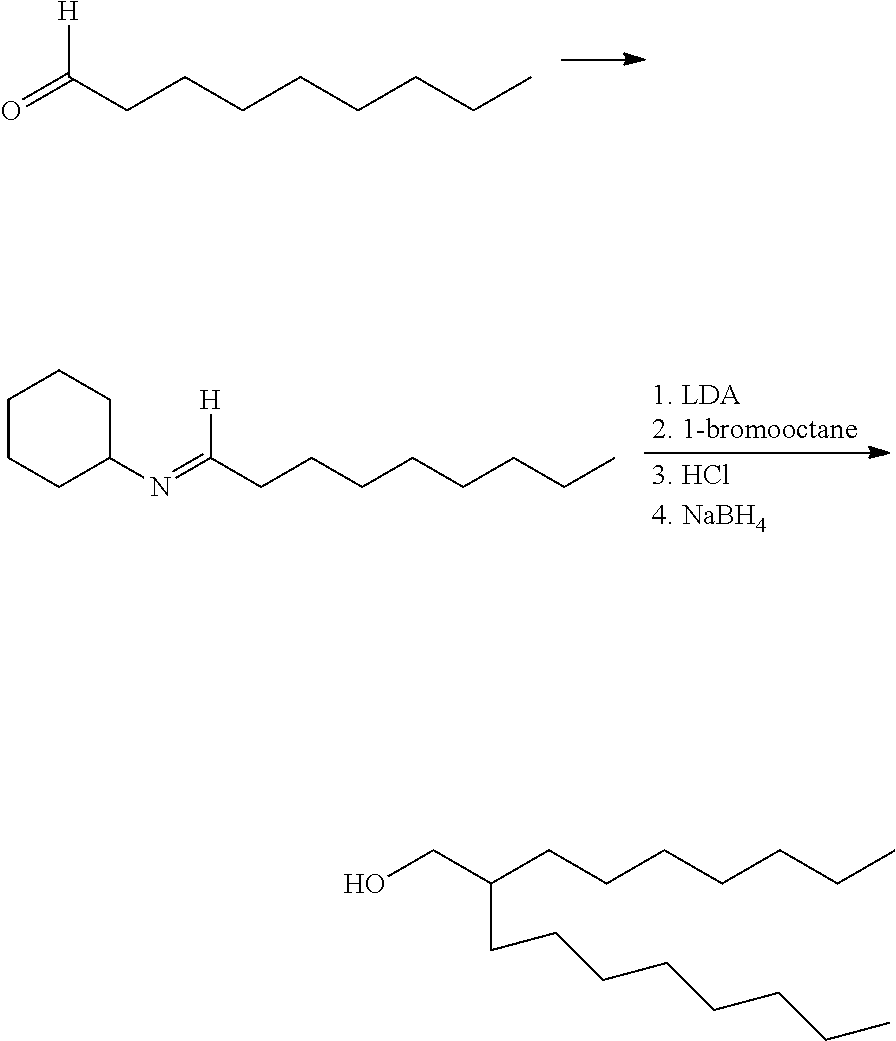Detergents for cold-water cleaning
a technology of detergent and cold water, applied in the preparation of detergent mixture composition, detergent compounding agent, amphetamine/electroneutral surface active compounds, etc., can solve the problems of difficult to remove greasy dirt, especially bacon grease, hot or warm water is not always desirable for washing, etc., to achieve outstanding cold water performance in removing greasy stains from soiled articles, and effective liquefaction of greasy soils
- Summary
- Abstract
- Description
- Claims
- Application Information
AI Technical Summary
Benefits of technology
Problems solved by technology
Method used
Image
Examples
Embodiment Construction
[0026]Section I describes mid-chain headgroup surfactants and their use in detergents for cold-water cleaning. Section II describes mid-chain, alkylene-bridged headgroup surfactants and their use in detergents for cold-water cleaning.
I. Mid-Chain Headgroup Surfactants
[0027]In one aspect, the invention relates to detergents useful for cold-water cleaning. The detergents comprise a mid-chain headgroup surfactant. The mid-chain headgroup surfactant has a saturated or unsaturated, linear or branched C14-C30 alkyl chain and a polar group bonded to a central zone carbon of the C14-C30 alkyl chain.
[0028]“Cold water” means water having a temperature less than 30° C., preferably from 5° C. to 28° C., more preferably 8° C. to 25° C. Depending on climate, sourced water will have a temperature in this range without requiring added heat.
[0029]“Mid-chain headgroup” surfactant means a surfactant in which the polar group is located at or near the center of the longest continuous alkyl chain.
[0030]T...
PUM
| Property | Measurement | Unit |
|---|---|---|
| wt. % | aaaaa | aaaaa |
| wt. % | aaaaa | aaaaa |
| temperature | aaaaa | aaaaa |
Abstract
Description
Claims
Application Information
 Login to View More
Login to View More - R&D
- Intellectual Property
- Life Sciences
- Materials
- Tech Scout
- Unparalleled Data Quality
- Higher Quality Content
- 60% Fewer Hallucinations
Browse by: Latest US Patents, China's latest patents, Technical Efficacy Thesaurus, Application Domain, Technology Topic, Popular Technical Reports.
© 2025 PatSnap. All rights reserved.Legal|Privacy policy|Modern Slavery Act Transparency Statement|Sitemap|About US| Contact US: help@patsnap.com



